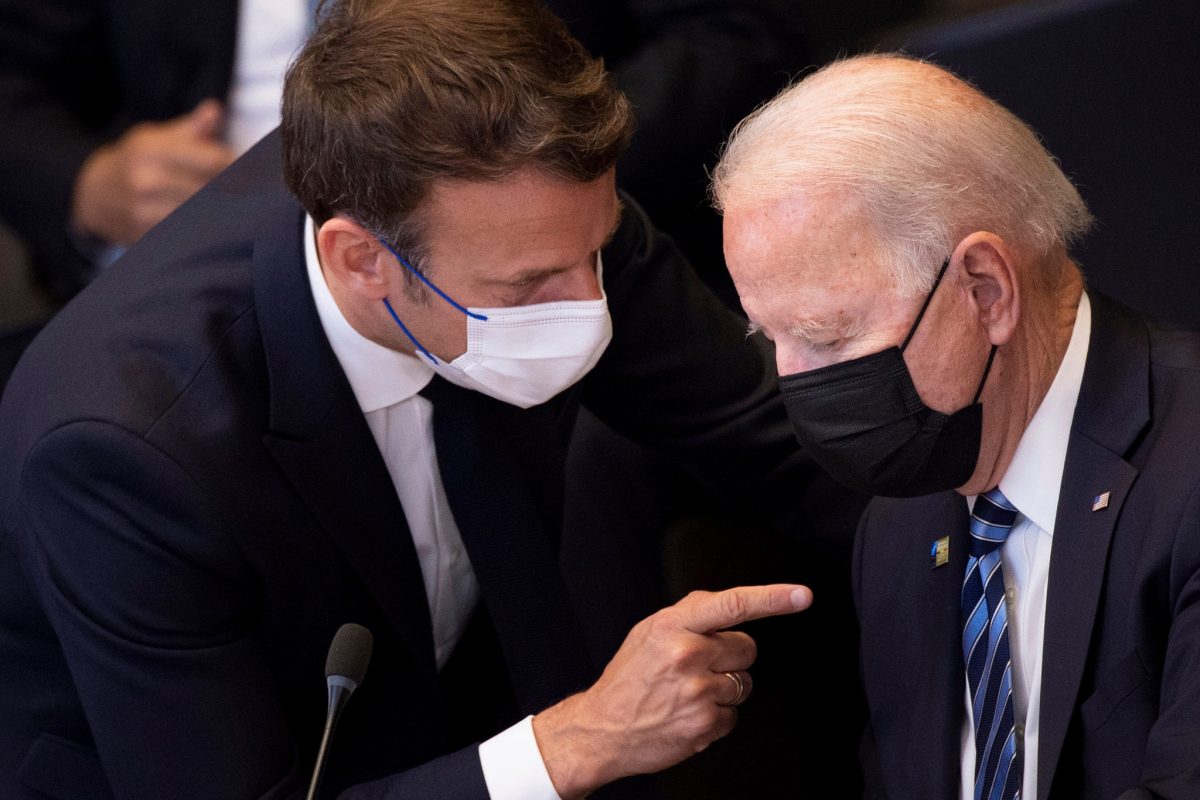Once more obeying the old cliché, the Western alliance is in disarray, this time over Australia’s breaking its contract to buy French submarines in favor of a U.S.-UK proposal. Weapons contract cancellations between countries happen all the time—Canada canceled its order for U.S. F-35 aircraft—but in this case, France took a step unprecedented in 240 years of American-French relations, withdrawing its ambassador while suspending defense talks with Britain.
This is potentially serious diplomatic fallout. But dispassionate examination of the contract and the emerging strategic environment in East Asia mandates the conclusion that the United States has, whether eagerly or reluctantly, risked a spat with France to achieve the more urgent priority of bailing Australia out of a bad decision.
In 2016, the Australian government obligated itself to pay what turned out to be $66 billion for 12 submarines that were originally French nuclear-powered designs, but retrofitted with diesel engines. As a former congressional defense budget analyst, I am jaded about eye-watering defense costs, but the sub’s price tag made me take notice. That’s $5.5 billion per copy to build a less-capable warship than its French prototype. By contrast, the proven and efficient American Virginia-class nuclear submarine (without the extra-cost latest hull extension module) costs half that much!
The French Suffren-class derivative would have to be gutted and rebuilt to accept diesel power, increasing project risk and inflating costs with a practically new design. And it would offer no new capabilities compared to the submarine it would replace. It would possess neither air-independent propulsion, lithium ion batteries, a vertical launch system for weapons, nor a large-diameter tube for unmanned systems. The design is like a Mercedes at a Rolls-Royce price with a retrofitted Fiat engine.
Difficulties arose in the first place because the Australian government, for domestic political reasons, at first insisted on nonnuclear propulsion. Buying nuclear Suffren-class vessels would require Australia to develop a nuclear industry to reprocess the spent fuel rods when the warships required refueling. Hence the rather ungainly kluge of the French offer to put diesels in a hull designed for nuclear power.
Problems appeared soon after the bid’s acceptance. In August 2016, the French contractor disclosed that it had been hacked, losing 22,000 documents related to submarines it was selling to India. This made Canberra doubt the security of the purchase. Then project costs escalated, and schedule slips meant that the final vessel might not be delivered until after 2050. This forced the Australians to spend more money extending the service lives of their current elderly submarines.
Nevertheless, Australia unwisely pushed ahead, signing in 2019 a further agreement with the French builder that was supposed to have been inked a year and a half earlier. The delay should have given the French some clue that the wheels were coming off, as should public testimony from Australia’s National Audit Office in 2020 about problems serious enough that the country’s naval advisory board considered walking away from the deal. Then, in April of this year, Australia refused to sign the next phase of the contract.
These developments must be seen in light of evolving geopolitics. In 2016, China rejected the ruling of the International Court of Arbitration that the South China Sea was international waters. It instead moved to de facto annex more than a million square miles of global commons, fortifying the sea’s islands and atolls while intimidating the six Southeast Asian nations bordering that body of water. Australia itself is now under Chinese sanctions for questioning China’s stonewalling of COVID-19 investigations.
In a more benign environment, a diesel submarine, capable of remaining silently submerged on batteries for long periods near Australia’s littorals, might have sufficed. But it would not be able to traverse thousands of miles of ocean—submerged, at high speed, as a nuclear-powered submarine could. Using its diesels would make it instantly detectable.
Given the new security environment—with elements in the Chinese ruling party even threatening nuclear attack on Japan if it meddles in Taiwan while talking about conducting nuclear first strikes in general—Australia is obliged to plan a forward defense. In the circumstances, a nuclear-powered sub is the more capable and cost-effective option. There are few available details of the U.S.-UK offer, but it appears likely that it will involve submarines with sealed reactors that will last the lifetime of the vessels (a technology America is capable of, as in the upcoming Columbia-class subs), obviating the need for an Australian nuclear-reprocessing industry.
France’s reaction to what was, after all, the fallout of its own participation in the international arms bazaar—in which the country can be a notably aggressive and sharp-elbowed player—was curious. Realpolitik between Australia, the U.S., and the UK amid an emerging threat is hardly “treason” against France, despite the French ambassador to Australia’s over-the-top formulation.
Fortunately, Presidents Biden and Macron have finally moved to dial back the acrimony. To be sure, Australia, the U.S., and the UK could have communicated more clearly. But Australia, albeit belatedly and with much broken diplomatic crockery, made the right decision.



